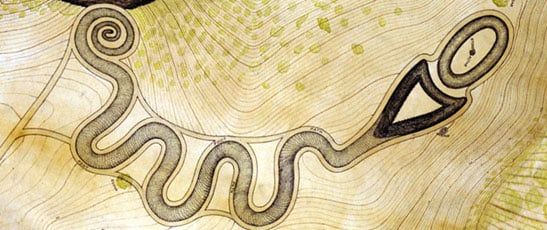The Mysterious Great Serpent Mound of Ohio
The Great Serpent Mound is a 1,300-foot long and 3-foot high prehistoric effigy mound located on a plateau of a crater along Ohio Brush Creek in Adams County, Ohio, and is the largest surviving prehistoric effigy mound in the world. Resembling an uncoiling serpent, the mound is steeped in mystery and controversy. Despite over a century of research, there is no conclusive evidence about what it represents, when it was built, and what its true purpose was, though various astronomical alignments suggest it may have functioned as a type of calendar.
The Serpent Mound conforms to the curve of the land on which it rests, with its head approaching a cliff above a stream. It winds back and forth for more than eight hundred feet and has seven distinct coils, ending in a triple-coiled tail. The serpent head has an open mouth extending around the east end of a 120-foot-long hollow oval feature, which is generally viewed as an egg, although other interpretations suggest it is the sun, the body of a frog, or merely the remnant of a platform. To the west of the effigy, is a triangular mound measuring approximately 32 feet at its base and long axis. The Serpent Mound is believed to have been laid out all at once, with a layer of clay and ash, and reinforced with stones.

An illustration of the Serpent Mound. Image source.
Thousands of years ago, Native American peoples populated the Ohioan landscape with mounds and massive earthworks. Initial research attributed the effigy to the Adena culture, which flourished from 1000 BC to 100 AD. The Adena culture are well-known for building burial and effigy mounds, many of which are located near the Great Serpent Mound. However, radiocarbon dating on pieces of charcoal found within the Serpent Mound established that people worked on the mound around 1070 AD. Thus, the mound may have been built by the Fort Ancient peoples, who lived in the Ohio Valley from 1000 CE to 1550 CE. Nevertheless, the testing is not conclusive as it only reveals that 1000-year-old charcoal was found within the mound. This could have ended up there long after the effigy was originally built.
Leave a Reply